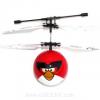- 1 reply
- 2,203 views
- Add Reply
- 2 replies
- 1,721 views
- Add Reply
- 7 replies
- 6,493 views
- Add Reply
- 1 reply
- 1,991 views
- Add Reply
- 1 reply
- 1,819 views
- Add Reply
Global Dataset

By intertronic,


https://grasswiki.osgeo.org/wiki/Global_datasets
Raster data
Elevation data
ASTER topography (GDEM V1)
Improved ASTER GDEM 1 from 2009:
GDEM global 30m elevation calculated from stereo-pair images collected by the Terra satellite. "This is the most complete, consistent global digital elevation data yet made available to the world." This is a very new dataset, at version 1 (treat as experimental). Accuracy will be improved in forthcoming versions (validation with S
GMTED2010

By intertronic,
Hello everyone,
there is a Terrain Model I wasn't aware of, so I would like to share with you some links.
For Global project, I usually GTOPO30 as a global DTM, but recently I discovered GMTED2010 (Global Multi-resolution Terrain Elevation Data 2010 ) a free avaIlable data model of the world at 250m, 500m and 1km resolution.
GMTED2010 provides a new level of detail in global topographic data. Previously, the best available global DEM was GTOPO30 with a horizontal grid spac
Drone for Surveying
By Reyalino,
I am completely a beginner on Drone. I used it only for capturing video (aerial videography) which in my opinion bit useless for surveying activities. I would love to hear any suggestion on using drone for surveying and could anyone suggest any opensource drone app for surveying? I am using DJI Inspire-2
Remove Hyperion bad line s in ENVI 5.2
By nnico,
Hello, Good day and Marry Christmas to everyone.
I try to process Hyperion EO-1 hyperspectral data with ENVI 5.2 and Hyperion tools 2.0 add-on from github and have easier with bad lines removing. After converting to ENVI format with and applying bad lines mask, I use Bad lines remove tool and specify column number and number of neighbor lines to aggregate (1). Nothing change after saving to new file (in ENVI and ENVI Classic). Also tried Spatial pixel editor in ENVI Classic for averaging “0
NDVI and LST
By deepgis,
Respected All,
How to establish corelation between NDVI image and LST (Land Surface Temprature) image in Idrisi or Terrset or in ArcMap.
Need your help. Grateful to you
-
Forum Statistics
8.8k
Total Topics43.5k
Total Posts



